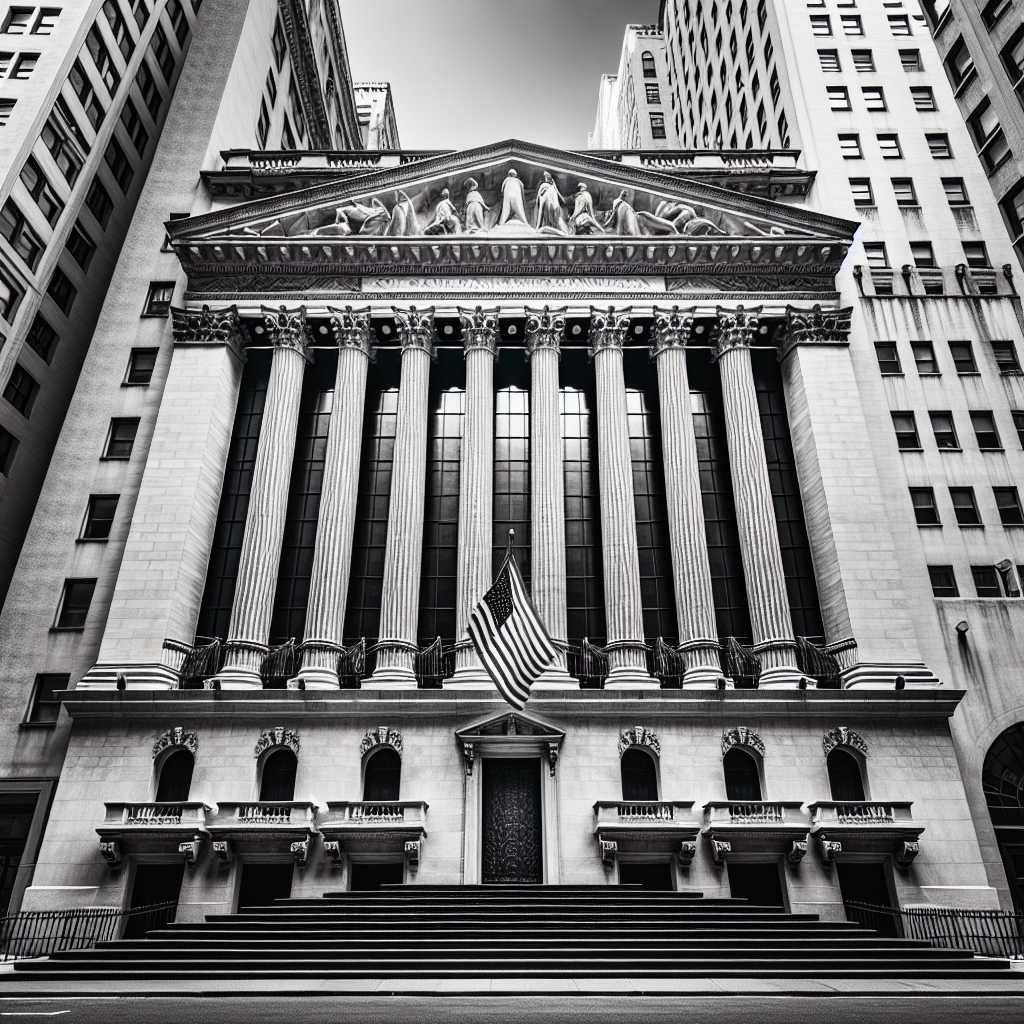The New York Stock Exchange: A Pillar of Global Finance
The New York Stock Exchange (NYSE), established in 1792, is a hallmark of global finance, representing one of the world’s largest stock exchanges by market capitalization. Operating from its iconic location at 11 Wall Street in New York City, the NYSE is synonymous with capitalism and has witnessed the ebb and flow of the United States economy for over two centuries. In this extensive examination, we will delve into the history, structure, significance, and influential role of the NYSE in driving economic growth and shaping global markets.
Historical Foundations and Evolution of the NYSE
The establishment of the NYSE dates back to May 17, 1792, when 24 stockbrokers and merchants signed the Buttonwood Agreement under a buttonwood tree on Wall Street. The document outlined guidelines for trading securities, with an ethos to prioritize fair dealings and transparency – principles which still govern the exchange today. Over time, what began as a meeting of brokers for bonds and bank stock transactions morphed into an inclusive financial center trading myriad assets.
Throughout American history, the NYSE played a role during pivotal moments such as the Civil War, two World Wars, and multiple financial crises, including Black Tuesday in 1929 signaling the onset of the Great Depression. Through these hardships and economic booms, NYSE continued to innovate with many developmental landmarks such as introducing continuous trading in 1871 and adopting electronic quotation systems in the late 20th century.
Structure of NYSE and Operational Mechanics
The NYSE operates under a hybrid format combining both floor-based and electronic trading. This dual-footing system endows it with flexibility and resilience. Traditional human brokers work alongside cutting-edge technology to execute trades, maintaining one of financial markets’ most hands-on human elements.
Setting it apart from electronically-based exchanges like NASDAQ, NYSE’s auction-based method enriches price discovery where traders physically present negotiate prices openly to match buyers with sellers at a fair price. Because of its hybrid model, granular human judgment compliments the efficiency of automations which inherently offers sophisticated oversight that pure electronics might not thoroughly encapsulate.
Global Influence and Innovation in Trading Technology
As a preeminent figure in global finance, NYSE listings are sought after by companies worldwide. Such prestige is due in part to stringent listing requirements which ensure that only firms maintaining a level of operational efficacy and transparency are traded on this platform. These standards engender trust among investors by verifying that any listed company is robustly scrutinized and obliged to uphold exacting financial and governance criteria.
Furthermore, embracing technical innovation has been a trademark pursuit of the NYSE to strengthen its competitive edge. For example, since adopting digital trading elements automated trade execution times have significantly reduced from seconds to microseconds ensuring better trades across distinct market conditions—a pivotal benchmark indicating how efficiently modern markets can operate.
Market Operations: From Opening to Closing Bell
Activities on the NYSE floors begin before the 9:30 AM Opening Bell when investors establish their interest levels and trading strategies. Once opened, customer orders flood through member brokers who then match buy orders with sell orders on each listed security throughout the day.
A vital feature to understand is market volatility’s impact on operations; times of instability typically result in manual operation enhancements to assuage drastic market sways. One manifestation is the ‘circuit breaker’, implemented to pause trading during extreme declines as experienced during significant downturns like Black Monday’eve 1987.
On mellower days without dire fluctuations, trading concludes at 4:00 PM – recognized via the Closing Bell ceremony often garnished by special guests symbolically marking ends to Manhattan’s business hours. Yet behind this ceremonious facade lies mountains of data processed signifying billions in capital shift—illustrative of how decisively moments marking open-to-closes matter.
Notes
In conclusion, The New York Stock Exchange is not just an American icon but an integral node in international finance’s skeletal framework—it offers an effective market platform via operational acumen and historical gravity anchoring deep-rooted channels uniting individual wealth-pilots with organized investment regiments worldwide.
Image description: A wide-angle view of the façade of the New York Stock Exchange building on Wall Street with steps leading up to six towering Corinthian columns beneath an American flag, capturing the stoic essence signifying financial power ingrained within this institution’s visage.
